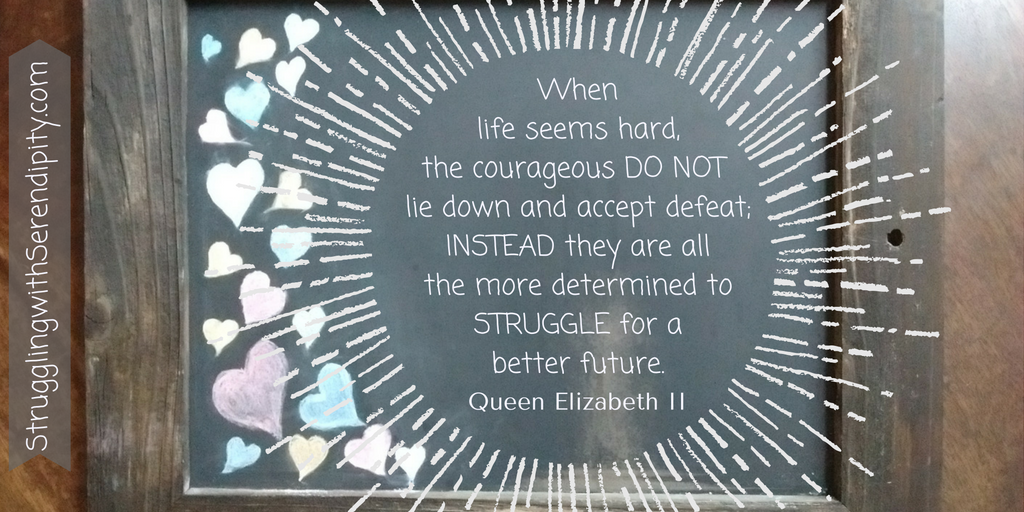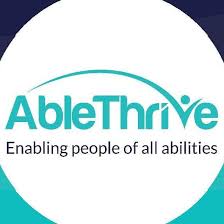|
Did you miss my October Serendipity Newsletter that came out last week?
------ For the first time since the car accident, months stretched ahead with nothing but time for Beth and for me. Abruptly back in Massachusetts after Beijing, Beth planned to get a job with almost a year until law school. John and I lived far from public transportation, and with independence a top priority, she decided to rent her first apartment and assumed she would find a full-time job to pay for it. A leap of faith. Separate plans converged in serendipity. Calling from Tiffin, Beth’s high school friend Lizzy asked to stay with us while she looked for an apartment. She decided to relocate to the Boston area to find a teaching job. Beth and Lizzy made an easy decision to be roommates. The two recent college graduates applied for jobs in Cambridge. Beth and Lizzy looked at more affordable apartments farther away. I drove them to tour a nice complex in Malden. When Beth asked for my opinion, I pointed out the considerable distance from Malden to Cambridge. Nevertheless, they signed a year lease for an apartment near the Malden T stop before either of them had a job. Lizzy’s parents arrived from Ohio to help with the move. I set up a single mattress on a metal frame for Beth and a small computer table from IKEA. She borrowed a shelving unit and a lamp from John and me. Beth’s Stanford Law dorm would be fully furnished, so it didn’t make sense to buy more. Beth’s sparse bedroom contrasted with her overflowing clothes closet. Within a week of signing the lease, Beth accepted a full-time job in Harvard Square as a research assistant for the Harvard Dept. of Health Policy. Lizzy had a successful job interview with the Cambridge schools where she procured the job. Beth and Lizzy each had a 30-minute commute from Malden to Cambridge on the T red line subway. Twice a day. “Becoming independent,” Beth said. “That is my greatest achievement.” Next: New challenges of independence!
2 Comments
In mid-December, my oldest daughter packed a suitcase for her flight to Boston after her last day of student teaching in Tiffin, Ohio. Maria had applied for teaching jobs and followed up with direct phone calls to ask for an interview. Her assertiveness, a skill I struggled with, landed her an interview in Cambridge.
Maria flew by herself for the first time into Logan airport. She slept on a futon chair in Beth’s dorm room and rode the subway by herself to the interview. Maria tapped into her passion for teaching children with disabilities. After, the sisters met for dinner at Bertucci’s in Harvard Square before they flew home together. A few days later, Maria accepted the job as a lead teacher in the Cambridge Public Schools’ Special Start program for preschoolers with a disability. The position would begin in a few weeks, in early January. I was proud of her and excited for her, though I also would miss her. Maria had decided to be a teacher when she was a preschooler. At her first library story hour with no parents, the librarian told me how Maria found her way onto the storyteller’s lap. At home, her little sister Beth was her student. In grade school, Maria loved to help in her dad’s classroom during summer school. Maria declared that we would live together forever in our Tiffin home, happily-ever-after. A decade later, she planned her move to Boston while John and I prepared to sell the only home our kids had known. Our last Christmas living in Ohio embraced nostalgia. We watched The Princess Bride, again, and made popcorn. We played N’Sync Christmas music while we wrapped presents. Ben visited, and we laughed at old videos the girls called “baby tapes.” One of our favorites showed Ben, 5, pulling his little sisters on a blanket around the dining room table. A giggle fest. The video captured a perfect silly afternoon. At the Vermilion farmhouse for Christmas, we connected with extended family and met new babies. Beth rang in the New Year with her best friends, Lizzy and Ellen, for the last time. It was a recap of fondue and favorite movies, including Elf and the Grinch. They still laughed so easily. I admired the young women they’d become. Next: A New Beginning!  (This blog tells my family's story. To see more, click "blog" at the top of this webpage.) My job as group home manager started with a bang. My new boss handed me keys and suggested I meet the residents over the weekend. If the woman on duty asked if she would be my assistant, I should tell her no. Driving to the home, I passed the pay phone I didn’t use the night of the accident, as well as the field where my car flipped three times. I knocked on the front door and entered a dark, depressing living room. Four residents watched TV while a woman crocheted in a separate room in front of another TV. Most jobs didn’t allow time for staff hobbies, including ones at group homes. I kept quiet and observed. She asked about the assistant position and when I responded, she argued. Leaving shortly after with the residents for an outing, she hit my parked car with the company van. Presumably by accident. I worked three 24-hour shifts a week including weekdays while the residents usually attended a workshop. I drove them to numerous doctor visits. I also volunteered additional time when Beth was in school. A mess of paperwork needed to be cleaned up in short order for a state inspection and the house had been neglected to the point of being unhealthy. I bleached the mold on and in the refrigerator and cleared legions of powdery bugs from overhead lights. I scoured decades of yellow wax off the kitchen floor, cleaned mice droppings out of cupboards, and threw away infested food. My mom helped me replace the wallpaper to brighten the living room. My hectic paid hours focused on the residents and improving their quality of life. I gave a pep talk at a staff meeting to enlist help to raise the bar. Thankfully, the crocheting woman transferred to another home. I aimed for a level of care I would want for someone I loved. With few staff and fewer resources, I fell short. Though I took a small measure of pride in trying. I recognized the seriousness of my responsibilities, aware of my impact on the day-to-day mental and physical health of the residents. Group home managers doubled as underpaid psychologists, nurses, and nutritionists. I expected the job to be taxing, like my earlier Tiffin Center job, where most of the residents had grown up in an institution without a loving family. The difference at the group home? Working alone most of the time. I dispensed a complicated litany of pills, my least favorite part of the job—especially when a volatile resident refused to take his psychotropic medicine. Despite behavior plans I followed, I filled out scores of incident reports. I also slept poorly three nights a week on an uncomfortable day bed. But it wasn’t all bad. Three of the residents played on a basketball team and I cheered for them at games with the fourth. Other outings could be fun, too. Sometimes. In the middle of the night, a deaf resident occasionally switched on his TV and cranked up the sound. He giggled when a sleepy worker stumbled in and out to turn off the volume. I waited to smile until after I turned to walk out of his room. Next: Beth and Homecoming! (This blog tells my family's story. To see more, click "blog" at the top of this webpage.)
I had the rare gift of time as Beth started her senior year of high school. She didn’t need me at school midday. Never bored, I protected my free hours by not turning the TV on during the day. I personalized three mother’s journals, one for each of my kids, with childhood memories and family history. I picked up needlework and writing projects, humming along to classic tunes playing in the background. I connected with Maria when she wasn’t at one of her jobs, college classes, or choir practices. Sometimes we met at Taco Bell to catch up over lunch. I called my parents on the phone and sent care packages to Ben at OSU. I walked for exercise. I met a friend for brunch most weeks at Bob Evans. When the waitress saw us approach from the parking lot, she had our iced teas ready. John never suggested I work outside the home in any way. We had enough, with his steady income and our frugal ways. But I convinced myself that I should return to a paid job for the school year until Beth started college. She gained more independence and encouraged me, assuming I wanted to work. Beth liked the idea of pushing the limits of her disability more often, and not relying on me when she was rushed or tired. I debated between a demanding job at better pay and a minimum wage job with less responsibility. With few choices in Tiffin, I decided to support adults with developmental disabilities. A job where I could make a small difference. A local agency offered me a group home manager position in a nearby town. A familiar job. Years earlier, a few weeks after my wedding and newly nineteen, I assumed the role of live-in manager at a different group home. John and I moved in before he started his first elementary teaching job. The year was 1977, during the first wave of the exodus from Ohio institutions. The best candidates for community living left first, including my four residents. Even so, the transition challenged everyone involved, every day. A few decades had passed since my first group home job, and some state institutions had closed. The exodus slowed to a trickle and included residents with multiple challenges. I accepted my new manager position on a Friday—without visiting the group home first. I hoped for the best. I could handle most anything for less than a year. Couldn’t I? Next: Overwhelming responsibilities!  (This blog tells my family's story. To see more, click "blog" at the top of this webpage.) On the advice of the social worker at Green Springs, Beth and I met with a Rehabilitation Services counselor. He asked about a career. Fifteen years old, she responded that she might be a rehab doctor like Dr. Miller. Surprised, the counselor chose his words carefully and voiced objections. He doubted her physical abilities, but to be fair, he didn’t know how persistent she could be in finding ways to use her hands for fine motor tasks. Beth didn’t like being told she couldn’t do something. With the exception of standing and walking and jumping, she regarded most physical obstacles as surmountable in some way. She asked for my opinion. I shared my certainty that she could be a great doctor—after proving herself every step of the way in the face of resistance from those who would see the wheelchair first. A computer expert set Beth’s mouse to respond to the soft touch of her thumb and added DragonSpeak software. The early version required time to teach the program to recognize your individual voice. Getting comfortable with typing, she gave up on DragonSpeak. Learning how to drive peaked her interest much more. The rehab counselor guided us through the steps after Beth passed the written test for her learner’s permit. A specialized instructor from Toledo recommended specific car modifications. Driving would not be a problem. The biggest issues: getting in and out the car independently, plus storing the wheelchair. A van with a lift would easily solve those issues, but instead, Beth bought a little blue Ford Focus hatchback with insurance money from the accident. Toledo mechanics added all of the modifications. Sitting in the driver’s seat, Beth used her right hand to grip a large knob attached to an easy-to-turn steering wheel. Her other hand pushed or pulled a bar on the left side of the steering wheel to apply the brakes or to go faster. The gas and brake pedals on the floor also worked (after testing that her spasms would not be likely to hit the pedals), so I could drive it the usual way. To top it off, a big motorized box on the roof lifted and stored a folding wheelchair, the control box in the driver’s reach. “My newest challenges are learning how to drive a car with adapted hand controls,” she said, “and how to transfer in and out of the driver’s seat independently.” To go anywhere in the car by herself, Beth had to open the door to the driver’s seat, remove the foot rests, position the wheelchair, lock it, place the sliding board to bridge the gap to the car, slowly shift over, put away the sliding board, grab the remote control, release the hook from the top, take off the chair cushion, fold the wheelchair, catch the folded seat with the hook, and push the toggle to lift and store the chair. With anything less than perfection, the car would not start and Beth could not fix it. So...we rarely used the topper. I flattened one of the back seats so I could set the chair into the hatchback without folding it or taking the wheels off: one small simplification in days that felt complicated. We didn't know that Beth's little blue car would carry us far and wide, to adventures that were completely unexpected. |
Cindy KolbeSign up for my Just Keep Swimming Newsletter by typing your email address in the box. Thanks!Categories
All
Archives
November 2022
|




 RSS Feed
RSS Feed











